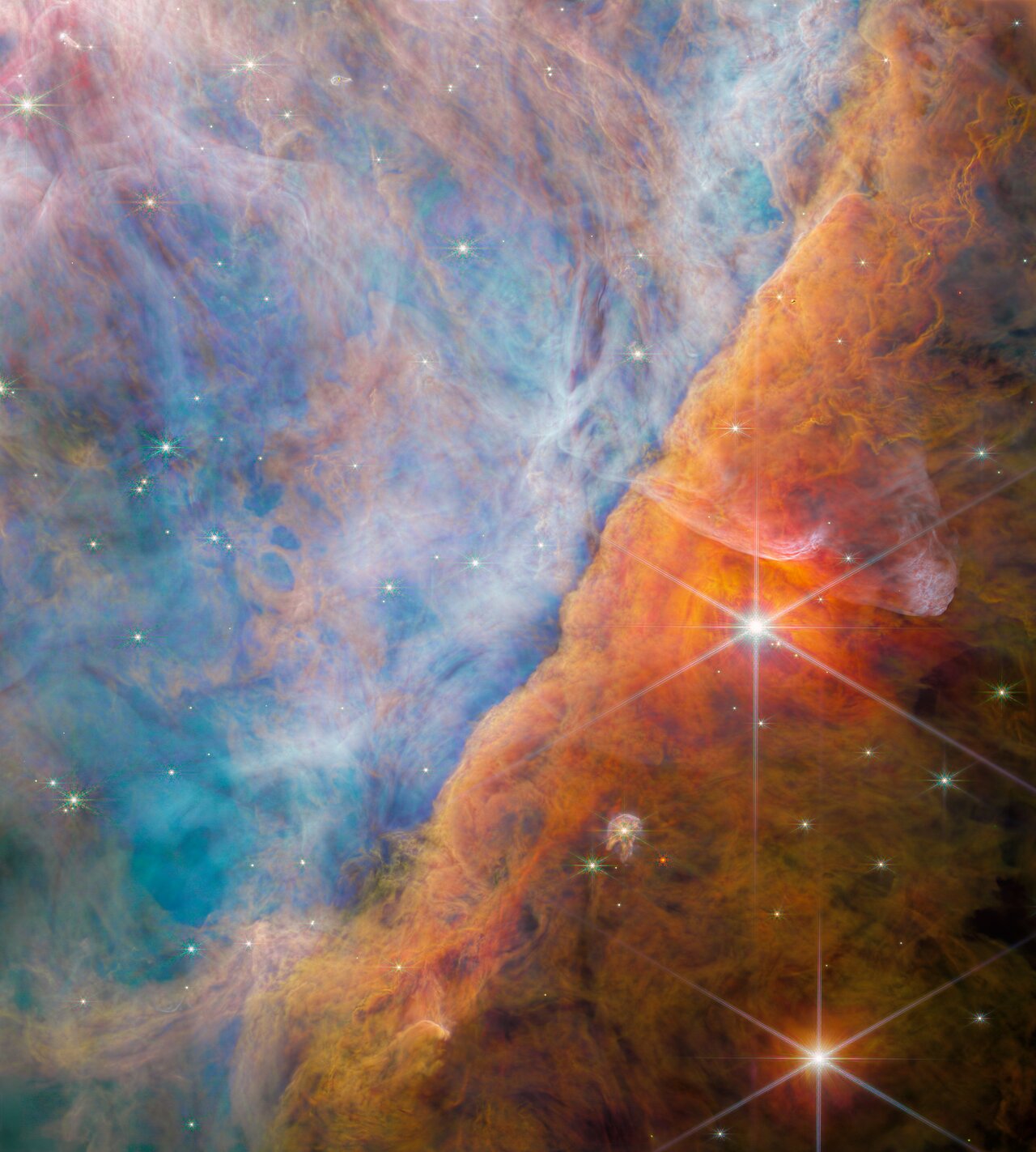The list of discoveries made by the James Webb Telescope goes on and on. This time, a French team succeeded for the first time in detecting the CH3+ ion around a star in the Orion Nebula. A technical feat, for a molecule at the root of organic chemistry, according to the CNRS.
It was a bit of a needle in the haystack.
The companion cation
The possibility of discovering concentrations of CH3+ ions in the universe around us is widely theorized. But until the James Webb Telescope began its scientific campaign, it was virtually impossible to detect this molecule. And even for the JWST, you need the MIRI instrument, which operates in the mid-infrared, to have the right absorption band.
It was then only a small peak on a few data graphs, remained elusive until a team led by Olivier Berné (IRAP Toulouse) managed to show that it was indeed present, around a young system planet d203-506, 1,350 light-years from us, in the Orion Nebula.
A “root” of organic chemistry
CH3+, which chemists and astrophysicists generally call by its nickname methyl cation, was until now a widely sought-after cosmic rarity. It could be crucial in the appearance of extraterrestrial life. Indeed, theoretical models explain that it is thanks to CH3+ that many complex organic molecules can emerge in an environment such as a young planetary system. This is good, since d203-506 is a protoplanetary disk in formation.
According to Olivier Berné’s team, the appearance of enough CH3+ ions to be detected by the James Webb is due to the intense ultraviolet radiation coming from other nearby stars. The discovery is the subject of an article published in the prestigious peer-reviewed journal Nature Monday, June 26.
Case to follow!
It should be noted that the planetary system in question has readings that are very different from the “traditional” measurements, in particular with an absence of water molecules.
Now, additional measurements and the detection of other similar systems are to be expected over time, also to test the mechanisms of interaction with the ultraviolet radiation of neighboring systems. But for now, everything rests on the James Webb, the only one who can take the right measures…
Source : CNRS

5